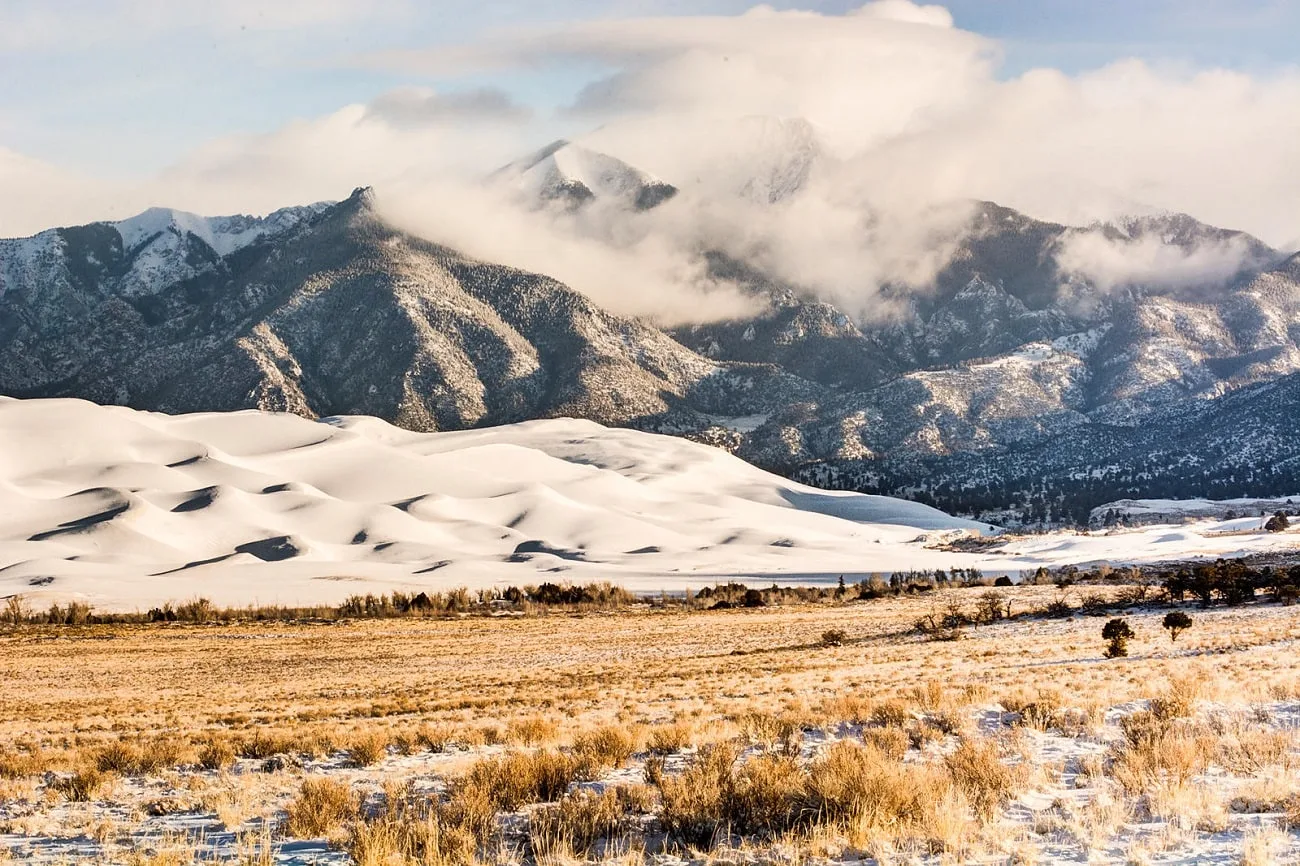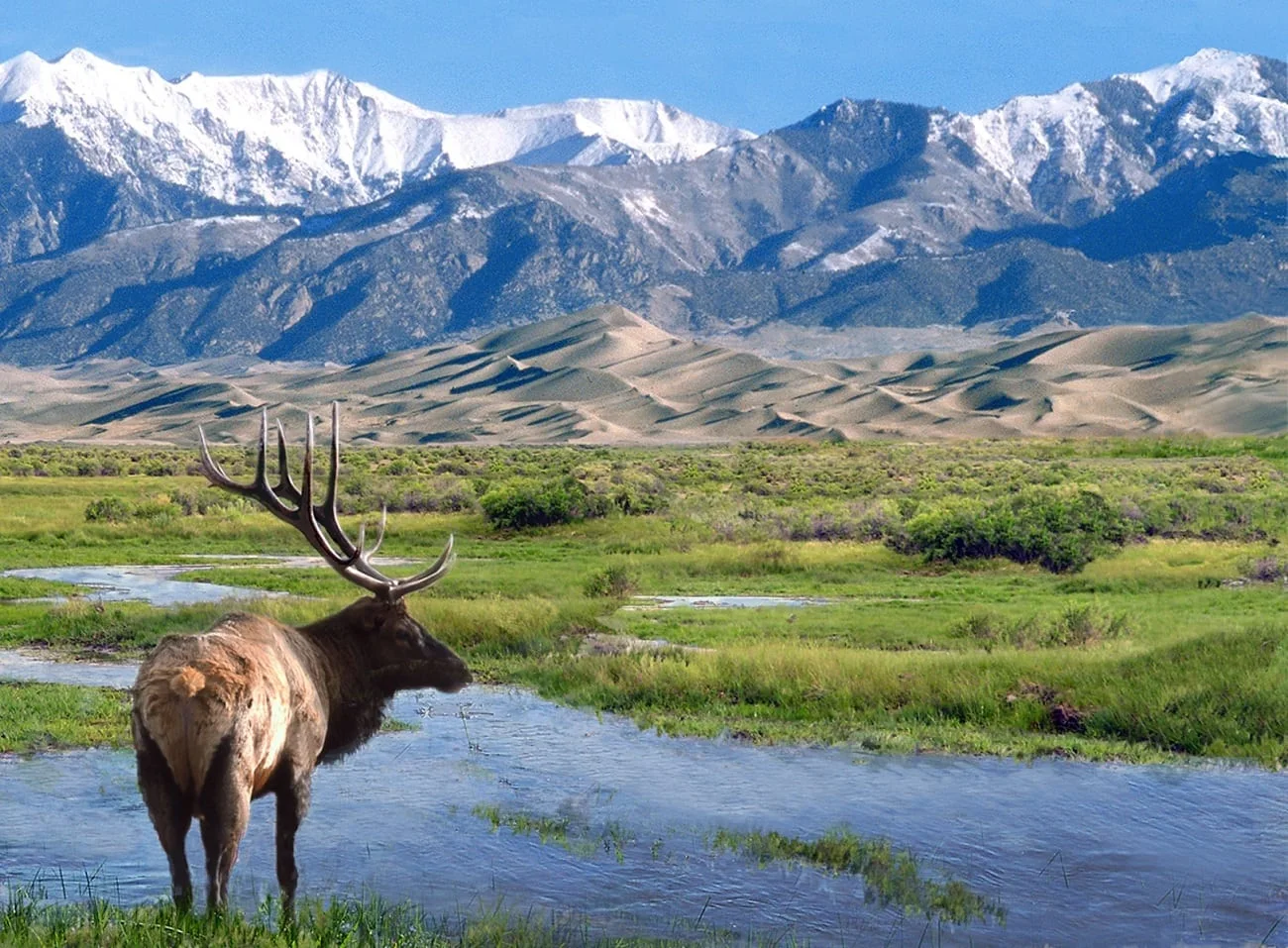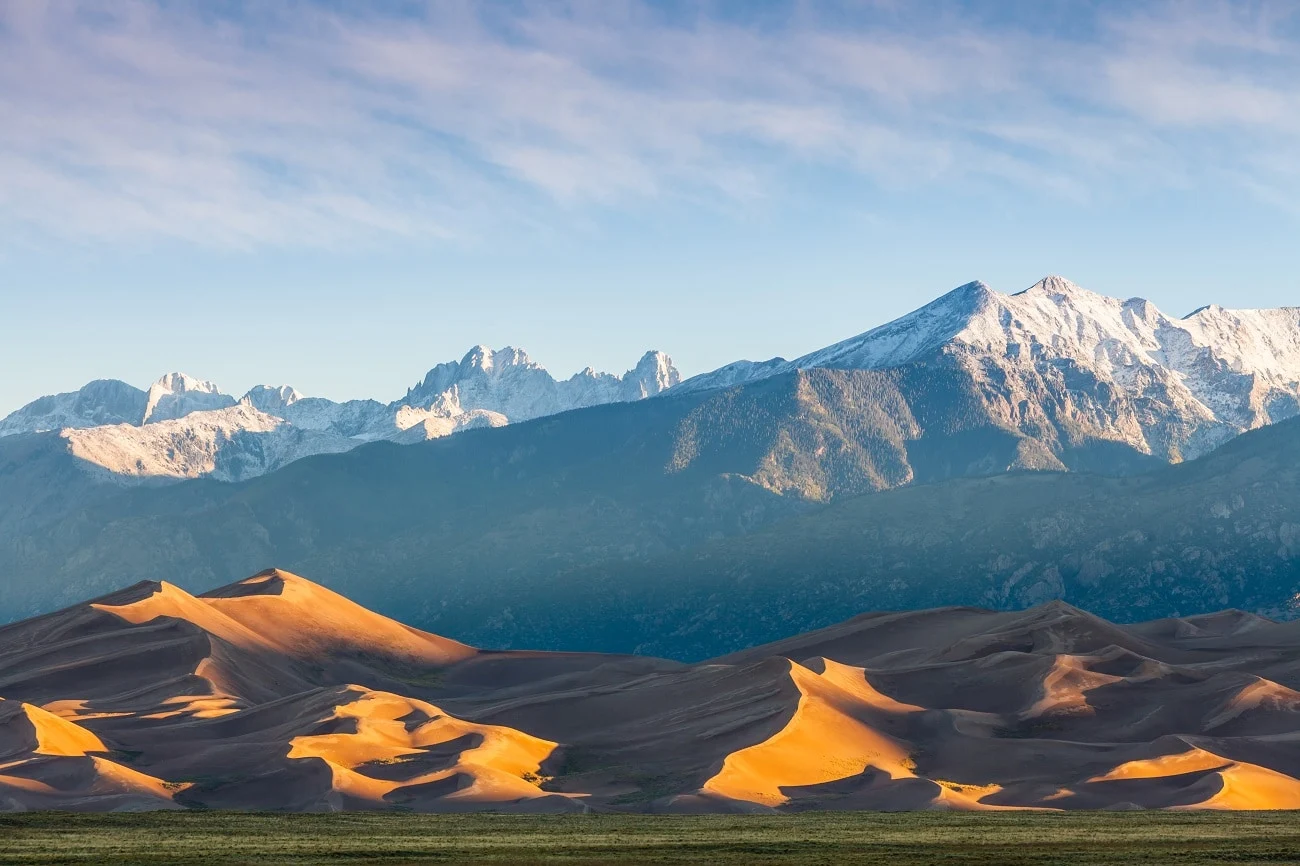The Great Sand Dunes National Park and Preserve is one of the most scenic places in the world. You can also walk, sandboard and other multiple activities in this incredible park. In this article we want to explain some things you should know before visiting this place.
 |
| Great Sand Dunes National Park and Preserve |
The landscapes in this desert are unique in the world. Snowy mountains, valleys and sand dunes.
Colorado is a state known for its mountains and ski resorts like Aspen, Vail, and Telluride. But in the south of the state you can also find one of the places with the most impressive landscapes that the world has known, the Great Sand Dunes National Park and Preserve.
 |
| Great Sand Dunes National Park and Preserve |
I have known a few deserts on previous trips, but none impressed me as much as this one. The combination of sand dunes, valley (Valle de San Luis) and snow-capped mountains gives you landscapes like few in the world.
History of the Park
The dunes and the area around them were designated a national monument in 1932. On November 22, 2000, Bill Clinton, President of the United States, signed the Great Sand Dunes National Park and Preserve Act of 2000 with the ultimate goal of achieving the national park status. With the help of The Nature Conservancy, the federal government acquired 97,000 acres (390 km2) of Rancho Baca, which in fact tripled the size of the park.
 |
| Great Sand Dunes National Park and Preserve |
The acquisition includes those sections of the ranch that previously bordered the park to the north and west, in addition to Mount Kit Carson (4,317 m.) And the Challenger Point subpeak (4,292 m.) And the hydrographic resources to the south. The land thus acquired was divided into three sections: part of the Sierra de la Sangre de Cristo was transferred to the Río Grande National Forest, another part to the west would be used as a wildlife area and would be the habitat of a herd of wild bison and the last part to the east would be used for limited hunting.
The dunes are created from the sand and sediment deposits of the Rio Grande and its tributaries that flow through the San Luis Valley. Over the years, the westerly winds pick up the sand particles from the lands flooded by the river. When the wind loses strength before crossing the Sierra de la Sangre de Cristo, it deposits the sand at the eastern end of the valley. This process continues and the dunes grow slowly as the wind shapes them anew each day.
 |
| Great Sand Dunes National Park and Preserve |
There are several streams that flow around the perimeter of the dunes. These streams erode the edge of the dune field and carry the sand downstream until the water seeps into the earth, disappears and deposits the sand on the surface. The wind picks up the sand deposits and blows them again over the dune field. It is enough to dig a few centimeters even at the top of the dunes to discover wet sand. Part of the motivation for turning the national monument into a national park was to increase the protection over the water, desired so much by the cities of Coloradoas for the farmers in the area. It is very easy to experience the dune formation process.
It is a very windy region, as the hikers who visit it can attest since many days they are riddled with sand and even small stones when they walk on the dunes. These materials are carried by the wind for miles and although the dunes do not change location or size very often, there are parabolic dunes that migrate through the main dune field. Sometimes they join this and other times they are covered by grass and vegetationand they stay where they are. The dunes are relatively stable but their morphology changes slightly with the passing of the seasons because their shape is strongly affected by the direction of the wind.
 |
| Great Sand Dunes National Park and Preserve |
The wind normally goes from the SW to the NE but in late summer the wind turns around creating remontant dunes. This process is part of the reasons that make the dunes so high. There are areas of black sand in the dunes that are actually deposits of magnetite, a crystalline black iron oxide.